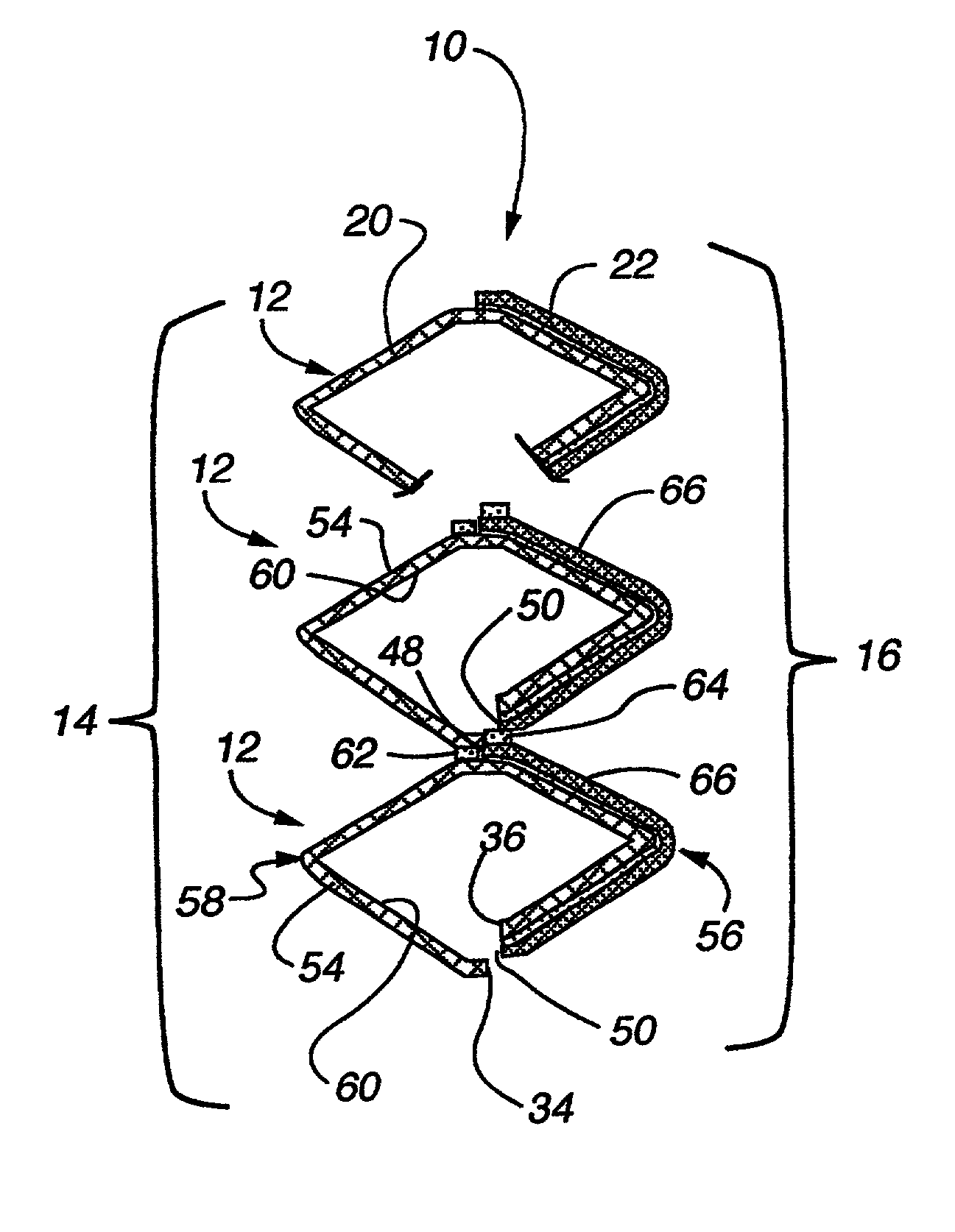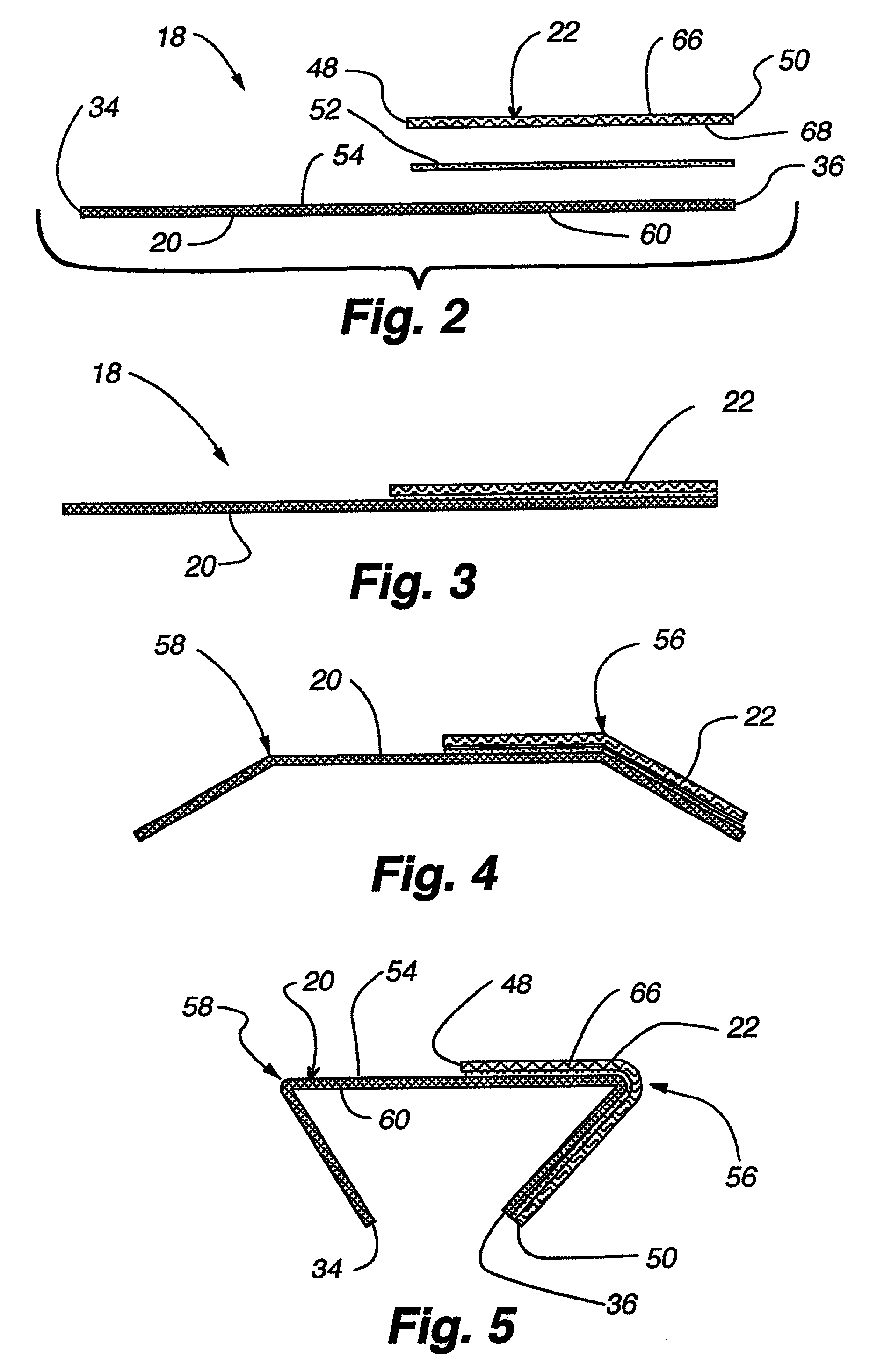Method of making a dual-laminate honeycomb panel
a honeycomb panel and honeycomb technology, applied in the direction of door/window protective devices, umbrellas, paper/cardboard articles, etc., can solve the problems of less attractive material, less expensive, and inability to obtain advantages
- Summary
- Abstract
- Description
- Claims
- Application Information
AI Technical Summary
Benefits of technology
Problems solved by technology
Method used
Image
Examples
first embodiment
[0038]The dual-laminate component 18 depicted in FIG. 3 is then folded into a precursor tubular cell 12 as shown, for example, by FIGS. 3, 4, 5, and 6. As shown by comparing FIGS. 3 and 4, a possible first step for forming a precursor tubular cell 12 comprises folding the dual-laminate component 18 of FIG. 3 along a first fold line 56 and a second fold line 58. FIGS. 5 and 6 depict further progression of the fold until a second side 60 of the first strip 20 is folded against itself along the first fold line 56 and the second fold line 58 (see FIGS. 6 and 7). FIG. 7 depicts a flattened precursor tubular cell 12 according to the present invention. A portion of the second strip 22 adjacent its first edge 48 is broken away to show the adhesive 52 between the second strip 22 and the first strip 20. In this configuration, the first edge 34 of the first strip 20 is adjacent the second edge 36 of the first strip 20. It should be noted that it is not necessary for hard creases to be present ...
second embodiment
[0041]Referring now to FIGS. 10, 11, 12, 13, 14, 15, 16, 17, 18, 19, 20, and 21, the invention shall be described. FIG. 10 is an exploded cross-sectional view of an assembly 70 from which dual-laminate components 18′ that will be formed into precursor tubular cells 12′ are cut. As shown in FIG. 10, the assembly 70 comprises a first sheet of material 72, a second sheet of material 74, and a plurality of parallel connecting lines 76, which are long beads of adhesive in the preferred embodiment, but which could also be, for example, lines of stitching or sonic weld lines. To form the assembly depicted in FIG. 11, the second sheet of foldable and creasable material 74 is laid down, and parallel lines of adhesive 76 are applied to the second sheet 74. Then, the first sheet of material 72 is laid on top of the second sheet 74. The lines of adhesive 76 secure the first sheet 72 to the second sheet 74 as shown in FIG. 11. Once the assembly 70 depicted in FIGS. 10 and 11 has been formed, a p...
PUM
| Property | Measurement | Unit |
|---|---|---|
| Width | aaaaa | aaaaa |
Abstract
Description
Claims
Application Information
 Login to view more
Login to view more - R&D Engineer
- R&D Manager
- IP Professional
- Industry Leading Data Capabilities
- Powerful AI technology
- Patent DNA Extraction
Browse by: Latest US Patents, China's latest patents, Technical Efficacy Thesaurus, Application Domain, Technology Topic.
© 2024 PatSnap. All rights reserved.Legal|Privacy policy|Modern Slavery Act Transparency Statement|Sitemap



